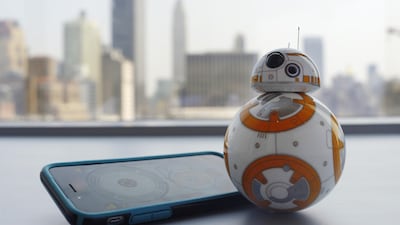Organisations that operate in today’s rapidly evolving landscape face diverse challenges, particularly in the business-to-consumer realm. Disruptive technologies such as artificial intelligence, autonomous vehicles, robotics and the Internet of Things are revolutionising the way businesses craft customer experiences.
At the same time, the lines between online and offline customer experience have blurred and disruptive business models have transformed how businesses operate. Against this volatile backdrop, partnerships as enablers of disruption are quickly gaining momentum globally.
Partnership disruption can be achieved through three models: partnering with established industry players, with disruptive businesses and with disruptive technology providers. While change can be driven by each of these models, businesses that will tap into all levels of partnership will be successful in keeping up with the fast pace at which the world is moving.
Forming traditional partnerships between established companies is often the most conservative route to disruption. These models are built on harnessing synergies to reinvent existing products and services as well as creating new appealing propositions. Macy’s partnership with Google provides a good example of such a partnership.
The department store chain recognised that finding the right products quickly and easily, can often be a challenge. In response to this, Macy’s paired with Google in 2014 to link to the latter’s proximity marketing platform which enables customers to search for specific items through their smartphones and locate the products at the nearest store. This facility proved particularly valuable to Macy’s customers during the busy holiday season.
_________________
Read more:
E-commerce in the UAE: is 2017 the year it finally takes off?
MAF on look out for acquisitions as first half earnings rise 4%
New City Centre Al Jazira mall to bring another Carrefour store to Abu Dhabi
_________________
Pharmacy store chain Walgreen’s partnership with tech start-up Pager, agreed in 2015, operates in a similar manner, as it allows customers to find healthcare service providers and obtain treatment for common illnesses. The service does this through its mobile platform, which matches patients’ ailments and locations with doctors and nurses in the same areas.
Majid Al Futtaim’s partnership with restaurateur Gary Rhodes to create ThEATre by Rhodes is an example of two established industry players coming together to create a new offering. The unique, experience-driven cinema dining concept is considered the first of its kind in the Middle East.
The second partnership model unites established industry players with disruptive businesses and is growing in popularity globally. Organisations taking this route can leverage the agility and innovative operating models of smaller companies to disrupt their existing products and services, enhance customer experiences and grow into new business areas. For the disruptors, partnering with established organisations offers scale and industry expertise.
The near century old Walt Disney Company, for instance, partnered with robotics start-up Sphero to create an app-controlled toy version of the Star Wars droid character “BB-8”. The partnership, which was forged following Sphero’s participation in the Disney Accelerator program, resulted in the creation of the world’s most popular selling toy of 2015.
Similarly, Majid Al Futtaim’s partnership with courier start-up Fetchr is yet another example of how pairing with disruptors can create great value for businesses and their customers. Through the partnership, we introduced a unique “hands-free” shopping service in the UAE, enabling customers to arrange delivery of their shopping items easily and conveniently through an app. Our collaboration with application-based car booking service Careem is another example, giving customers access to an effortless, convenient journey to our destinations.
At the other end of the spectrum, partnerships with disruptive technology providers are helping to revolutionise industries internationally and in some instances, create entirely new markets. The video gaming industry is a good example of this. Last year, Sony introduced PlayStation VR, which uses virtual reality to transform the way people play video games, providing an immersive experience.
Another example closer to home, is the agreement signed in February between Dubai’s RTA and Tesla to introduce 200 cars equipped with autonomous driving technology to the city’s transportation system. The deal, which falls under the Dubai Smart Autonomous Mobility Strategy, will enable the RTA to transform up to 25 per cent of taxi rides in the city into autonomous journeys by 2030.
The power of partnerships in driving innovation and enhancing customer experiences is undeniable. However, disruption need not be driven solely by technology. Partnerships that result in elevated customer experiences through dynamism and innovation can be just as powerful as those driven by disruptive technology. Industry players that embrace the trend early on, will succeed in staying ahead of the curve. However, this can only be achieved within a flexible and dynamic operating environment that encourages experimentation and empowers its employees.
Vino El Khatib is Chief Marketing and Brand Officer at Majid Al Futtaim Holding

